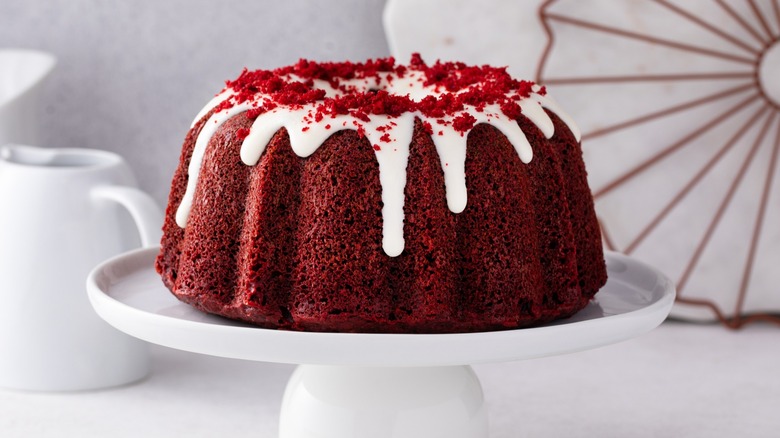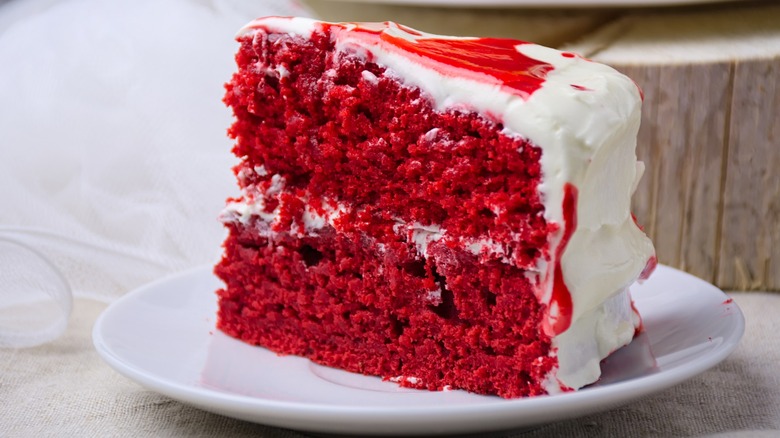So What Flavor Is Red Velvet Anyways?
We may receive a commission on purchases made from links.
Red velvet's striking red color and light tang make it memorable, but its flavor is harder to pin down. It's a favorite for cakes, cupcakes, and other baked goods, but unlike other clear-cut dessert flavors, red velvet has a subtle complexity. Despite sometimes being confused for chocolate cake that is dyed red, red velvet is its own flavor. Its mild cocoa taste, courtesy of just a bit of cocoa powder, isn't overtly chocolatey but adds a hint of richness.
Combined with vanilla and acidic elements from buttermilk and vinegar, red velvet ends up with a balanced, almost velvety taste. It's typically topped with cream cheese frosting, which adds a sweet, creamy layer of tang. The resulting flavor is nuanced and difficult to describe, but remains a favorite after all these years. Creating a perfect red velvet cake requires a thoughtful balance of these ingredients. Recipes for red velvet often include buttermilk for a specific reason: The acidity it brings enhances the cake's signature flavor.
In fact, this tangy dairy product is a key ingredient for many bakers, including Ina Garten, who considers buttermilk her secret to perfectly moist red velvet cupcakes. The tang of buttermilk pairs with the cake's other acidic components, like vinegar, to help create that distinct taste. Most red velvet recipes call for unprocessed cocoa powder as well, which is also slightly acidic, and imparts richness without overpowering the cake's other flavors. For that iconic pop of red, most recipes use food coloring, though natural dyes like beet juice also work.
Red velvet's rich history
Vibrant, tangy red velvet cake has roots in the Victorian era, when vinegar and buttermilk were necessities for tender cake, rather than add-ins for a boost of flavor. Vinegar coupled with unprocessed cocoa powder turned the cake a reddish color, setting the stage for the iconic color we associate it with today. The processing of ingredients in later years would eliminate the chemical reaction that caused the traditional coloring, so bakers began using dyes to achieve the red color — a practice that continues today.
The popularity of the cake would be later cemented when it was added to the restaurant menu at the Waldorf-Astoria, an upscale New York hotel. It was also sold around the same time at a department store in Canada. Soon after, John A. Adams, inspired by the cake he ate at the Waldorf-Astoria, developed red food coloring. This confluence of events popularized the cake to the masses, though the cream cheese frosting wouldn't be created and become the norm until later.
Today, you only need to search "red velvet recipes" online to find a wealth of options. You can also buy a boxed red velvet cake mix (like this one on Amazon) for an even simpler baking experience. It's easy to elevate boxed cake mixes by adding ingredients, too. Given the wealth of full cakes, cupcakes, pound cakes, as well as ice cream, and red velvet-inspired takes on other classic desserts — the mysterious red velvet flavor is inescapable. Today's red velvet might look and taste slightly different from its predecessor, but the essential flavors are still intact, meaning you can enjoy a little slice of history every time you take a bite.

